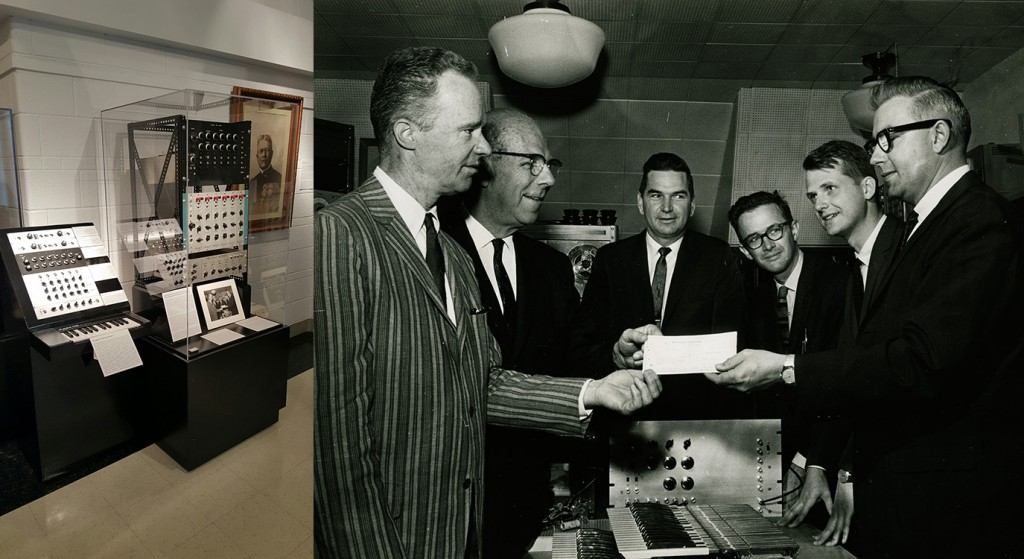
School of Music Director Duane Branigan, College of Engineering Dean William Everitt, Unidentified individual, Lejaren Hiller, Jr., and James Beauchamp accept sponsorship check from Magnavox Executive, 1963. (left to right)
The Sousa Archives’ newest exhibition, “Early Sound Synthesis at the University of Illinois: James Beauchamp and the Harmonic Tone Generator,” opened today. In 1958, Lejaren Hiller Jr. founded the Experimental Music Studio (EMS) at the University of Illinois with the intention of creating and developing electronic and computer music. Due to the EMS’ interdisciplinary nature, the studio attracted the attention of James Beauchamp in 1961, one of the most important contributors to the development of electronic music at the University of Illinois. After receiving a Master’s degree in electrical engineering at the University of Michigan in 1961 and working for a year in Los Angles at a space technology company, Beauchamp came to the University of Illinois in 1962 as a PhD student in electrical engineering, assuming a fellowship under a 3-year grant from the Magnavox Corporation for his early work in the EMS. In 1964, under the direction of Hiller, Beauchamp completed the Harmonic Tone Generator (HTG). The HTG was one of the first voltage-controlled electronic music synthesizers developed in America. The original HTG was donated to the Sousa Archives in January 2015, but it could not be restored to playing condition. To provide visitors with a better idea of how the HTG functioned, Mark Wayne Smart of the University’s Department of Electrical & Computer Engineering agreed to work with Beauchamp to construct a recreation of his original HTG. Through the financial support of the Sousa Archives and Center for American Music the newly created HTG-2 provides the same functionality that Beauchamp had built into his original synthesizer and visitors are encouraged to play the HTG-2 to begin their exploration of the early electronic sound synthesis techniques that were developed at the University of Illinois.